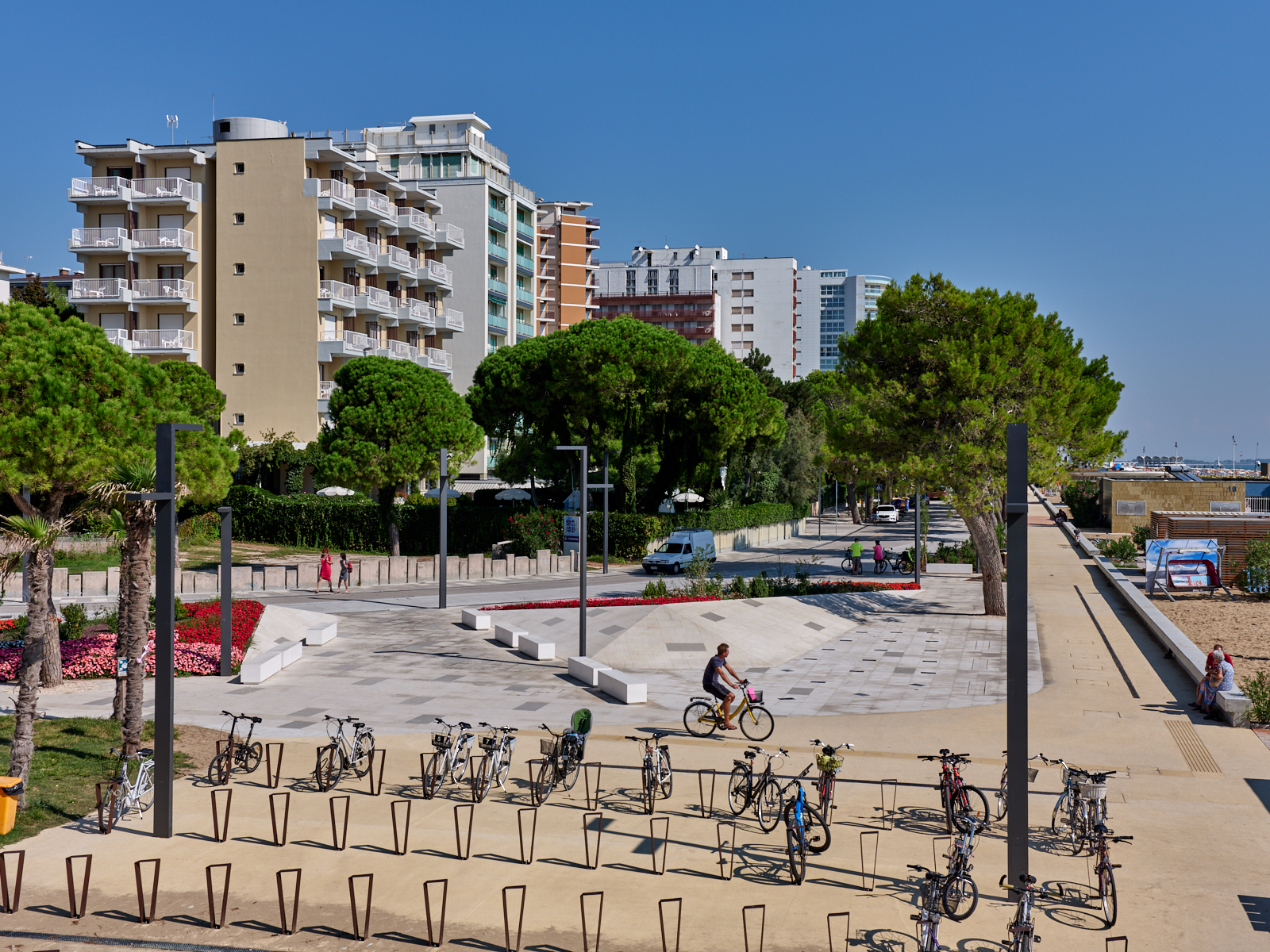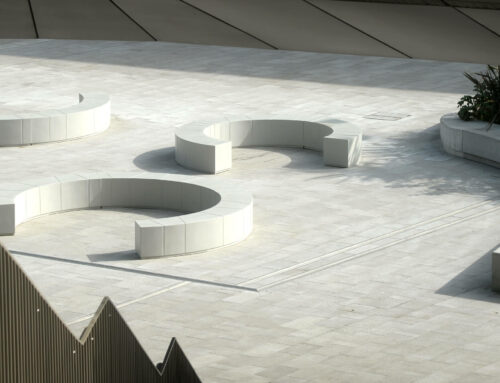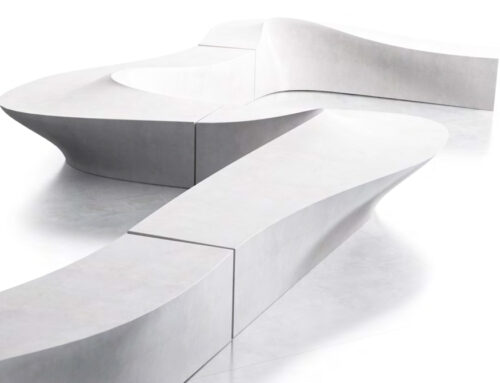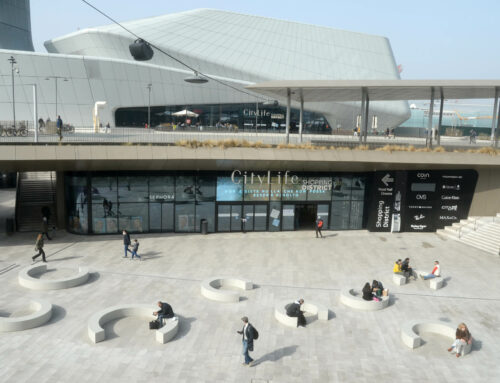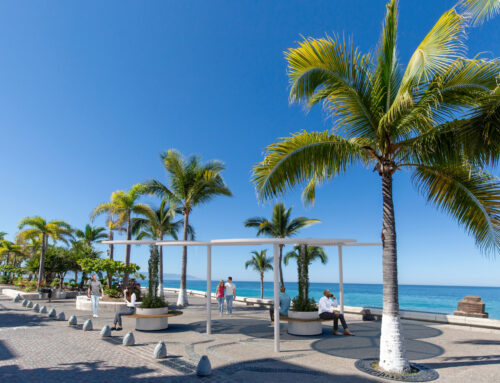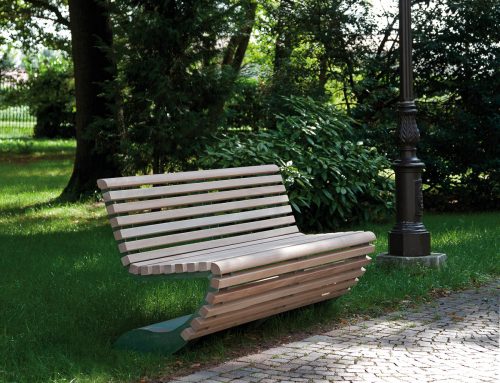Sustainable street furniture represents a challenge and an opportunity for modern cities. With an increasing urban population and growing environmental concerns, it is essential to adopt strategies that reduce environmental impact and improve citizens’ quality of life.
In this article, we explore eco-friendly materials, strategies to reduce environmental impact and innovative solutions to furnish the city, with a focus on LAB23 projects.
Eco-friendly materials for sustainable street furniture
The use of eco-friendly materials is crucial for sustainable street furniture. These materials must be recycled, recyclable or biodegradable, and have a low environmental impact during their life cycle.
Some examples include:
- FSC-certified wood: FSC stands for Forest Stewardship Council, this is wood from sustainably managed forests, which reduces deforestation and ensures the preservation of ecosystems.
- Corten steel: thanks to the formation of a protective coating that prevents corrosion, this type of steel is highly resistant and has a long service life, reducing the need for frequent replacement.
- Recycled plastic: using recycled plastic for benches, litter bins and other urban structures helps reduce waste and pollution.
LAB23 is at the forefront of the use of innovative and sustainable materials. A significant example is WPVC, a material that combines strength and sustainability, perfect for urban applications.
WPVC (Wood Plastic Vinyl Composite) is an innovative material composed of a mixture of wood and plastic, combining strength, durability and sustainability, ideal for urban furniture applications.
Besides the choice of materials, how can cities be made more sustainable? Let’s see it together.
Strategies to reduce the environmental impact of street furniture
Strategies to make cities more sustainable and reduce the environmental impact of street furniture include:
- Modular design: modular structures can be easily adapted, repaired or recycled, reducing waste and long-term costs.
- Sustainable mobility: implementing bicycle lanes, electric vehicle charging stations and pedestrian spaces promotes cleaner mobility and reduces air pollution.
- Green spaces: Adding trees, vertical gardens and green roofs helps improve air quality, reduce the heat island effect (the phenomenon of higher urban temperatures compared to surrounding rural areas due to impermeable surfaces and lack of vegetation) and promote biodiversity.
In its long experience in this field, LAB23 has realized urban regeneration projects such as the waterfront in Lignano Sabbiadoro and Piazza Santa Maria dei Battuti in Treviso that integrate sustainable and innovative solutions to improve the urban environment.
Sustainable street furniture is essential to create more liveable, resilient and environmentally friendly cities.
Using eco-friendly materials, adopting strategies to reduce environmental impact and implementing solutions to lower urban temperatures are key steps in this direction. LAB23 continues to be a leader in this field, offering innovative and sustainable solutions for urban furniture.
Contact us for more information and to find out more about our proposals

